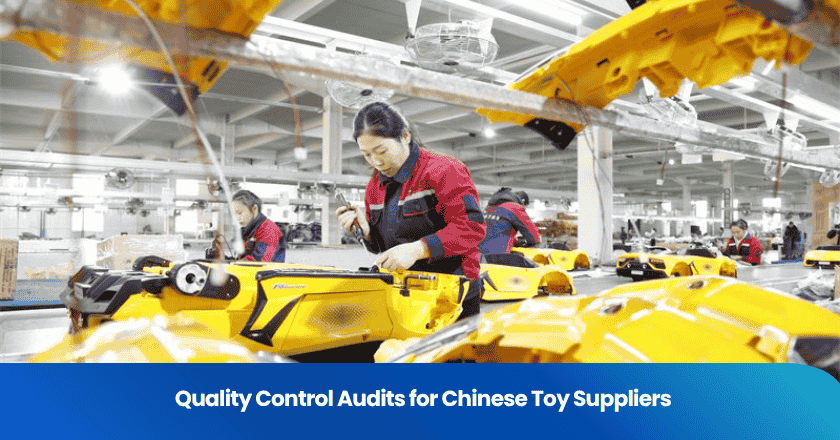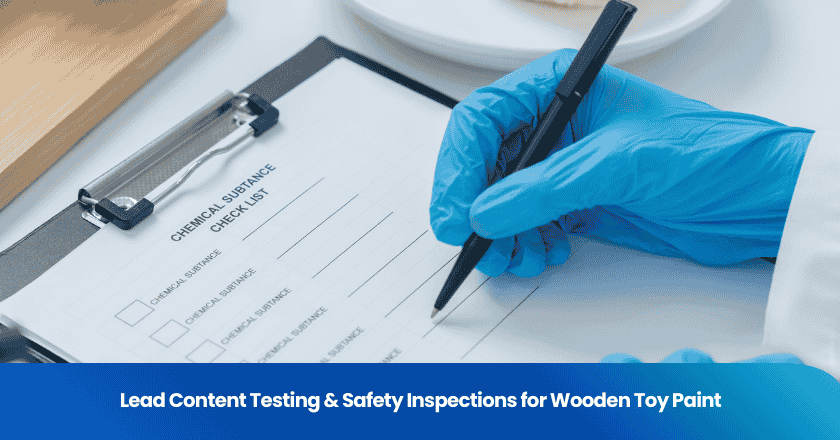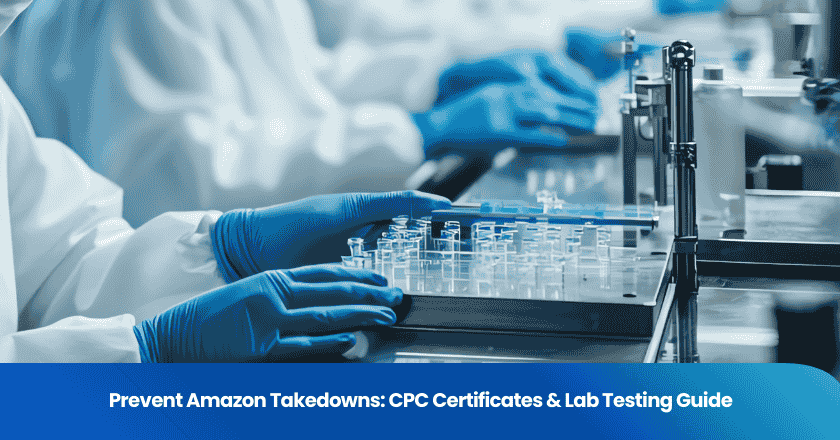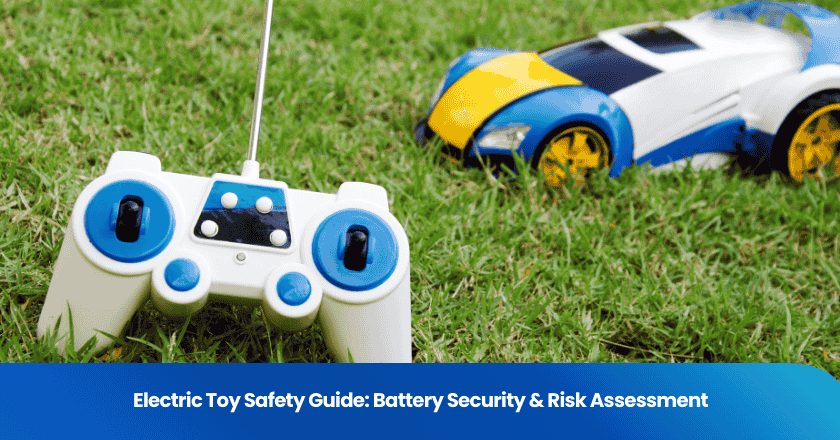
You face many challenges when importing toys from china. Quality control audits help you ensure that every toy meets strict safety and compliance standards. These audits check if your suppliers follow the rules and produce safe products. You reduce risks and protect your reputation by making quality control audits a regular part of your process. Children’s safety depends on the toys you choose to import.
Key Takeaways
• Quality control audits help ensure toys from China meet safety and legal standards, protecting children and your business.
• Regular audits catch problems early, reduce risks, and build trust with customers by showing your commitment to quality.
• A thorough audit checks supplier compliance, product safety certifications, quality management systems, and toy-specific tests like drop and bite tests.
• Use a clear audit checklist and perform inspections before, during, and after production to maintain high product quality.
• Work closely with your supplier, share inspection results, and use third-party inspections to improve safety and avoid costly mistakes.
Quality Control Audits Overview
What Are Quality Control Audits
You need to understand what a quality control audit is before you start working with any supplier in China. A quality control audit is a detailed review of a supplier’s processes, facilities, and products. You use this audit to check if the supplier meets your standards for safety, compliance, and quality. During a supplier audit, you look at how the supplier manages raw materials, production lines, and finished goods. You also check if the supplier follows local and international regulations. Supplier audits help you see if the supplier can deliver consistent product quality.
Why Audits Matter
You cannot ignore the importance of audits when sourcing toys. Audits protect you from risks that can harm your business. When you conduct a supplier audit, you make sure the supplier follows safety rules and produces safe products. You also confirm that the supplier meets legal requirements. Regular audits help you catch problems early. You avoid costly recalls and protect your reputation. Supplier audits also show your commitment to quality and safety. This builds trust with your customers and partners.
Tip: Schedule audits at different stages of your relationship with a supplier. Early audits help you choose the right supplier. Ongoing audits keep quality high.
Key Risks in China Toy Sourcing
You face several risks when you source toys from China. Some suppliers may use low-quality materials or skip important safety steps. This can lead to unsafe products. You may also find suppliers who do not follow regulations. This puts you at risk of legal trouble. Poor quality control can result in defective products that fail safety tests. You might also face delays if the supplier cannot meet your standards. Supplier audits help you spot these risks before they become bigger problems. By making audits a regular part of your process, you reduce the chance of receiving unsafe or poor-quality products.
Audit Components
A successful supplier audit covers several important areas. You need to check compliance, verify product safety, review quality management systems, and perform specific safety tests. Each part of the audit helps you make sure your supplier delivers safe and reliable toys.
Supplier Compliance Checks
You start every supplier audit with a supplier compliance audit. This step checks if your supplier follows all local and international laws. You look at labor practices, environmental rules, and business licenses. You also review records to see if the supplier meets industry standards. If you skip this step, you risk working with suppliers who break the law or ignore safety rules. You protect your business by making compliance checks a key part of every audit.
Note: Always ask for up-to-date documents during your inspection. This helps you confirm that your supplier stays compliant over time.
Product Safety and Certifications
Product safety sits at the heart of every supplier audit. You must check if the toys meet safety standards in your target market. Look for certifications like EN71, ASTM F963, or CCC. These certificates show that the product passed strict safety tests. During the inspection, you review test reports and certificates for each toy. You also check if the supplier keeps records of past inspections. If you find missing or expired certificates, you should ask for new tests before you accept the shipment.
A table can help you track which certifications each product needs:
| Product Type | Required Certification | Test Report Date | Status |
|---|---|---|---|
| Plush Toy | EN71 | 2024-03-10 | Valid |
| Plastic Figure | ASTM F963 | 2024-02-15 | Valid |
| Electronic Toy | CCC | 2024-01-20 | Expired |
Quality Management Systems (ISO 9001)
You need to check if your supplier uses a strong quality management system. ISO 9001 is the most common standard for this. If your supplier has ISO 9001 certification, it means they follow strict quality controls in every step of production. During the audit, you review their quality manual, process records, and training logs. You also look at how they handle defects and customer complaints. A good quality management system helps your supplier deliver consistent product quality. It also reduces the risk of defects and recalls.
Tip: Ask your supplier to show you their ISO 9001 certificate and explain how they use it in daily operations.
Toy-Specific Tests (Drop, Bite)
You cannot skip toy-specific safety tests during your inspection. These tests check if the product can handle real-world use by children. The drop test checks if the toy breaks when dropped from a certain height. The bite test checks if small parts come loose when a child bites the toy. You should watch these tests during the supplier audit or review the test reports. If the product fails, you must ask the supplier to fix the problem before shipping. These tests help you make sure the toys are safe and meet all safety standards.
A checklist for toy-specific tests might include:
• Drop test results
• Bite test results
• Sharp edge inspection
• Small parts inspection
You make your supplier audits more effective by covering all these audit components. You protect your business and your customers by checking compliance, product safety, quality systems, and toy-specific tests in every inspection.
Audit Steps
Pre-Collaboration Audits
You start your journey with a pre-collaboration audit. This step helps you decide if a supplier fits your needs. You visit the factory or arrange a remote review. You check the supplier’s licenses, business records, and past performance. You also look at their production capacity and quality control systems. This early audit lets you spot risks before you sign any contract. You avoid surprises by making sure the supplier meets your standards from the start.
A pre-collaboration audit often includes:
• Reviewing the supplier’s legal documents
• Checking the factory’s production lines
• Assessing the supplier’s quality management system
• Verifying previous audit results
You use this information to decide if you want to move forward. If you find problems, you can look for another supplier before you invest more time or money.
Preparing Audit Checklists
A strong supplier audit checklist guides every step of your inspection. You create this checklist before you visit the factory. You list all the points you want to check, such as raw material quality, production process, and safety tests. You also include requirements for certifications and compliance. A clear checklist helps you stay organized and ensures you do not miss any important details.
Tip: Update your supplier audit checklist for each new product or supplier. This keeps your audits focused and effective.
Your checklist should cover:
• Supplier compliance with local and international laws
• Product safety certifications
• Quality management systems
• Toy-specific safety tests
• Records of previous inspections
You use the checklist during every audit. This makes your china quality control inspection more reliable and thorough.
China Quality Control Inspection
China quality control inspection forms the core of your audit process. You use several types of inspections to monitor your supplier’s performance at every stage. Each inspection targets a different part of the production cycle.
1. Pre-production inspection: You check raw materials and components before production starts. This step helps you catch problems early. You make sure the supplier uses safe and approved materials.
2. During production inspection: You visit the factory while production is underway. You check if the supplier follows your requirements and if the process matches your standards. You also look for defects or process issues.
3. Pre-shipment inspection: You inspect finished products before they leave the factory. You check packaging, labeling, and product quality. This step helps you avoid shipping defective or unsafe toys.
You repeat china quality control inspection at each stage to reduce risks. You use product inspection services to get detailed reports. These reports help you make decisions about accepting or rejecting shipments. You also use china quality control inspection to confirm that the supplier fixes any problems you found earlier.
Note: Always keep records of every inspection. This helps you track supplier performance over time.
Third-Party Quality Control Inspection Services
You improve your audit process by using third-party inspection. Reliable third-party inspection teams bring expertise and objectivity. They know the latest safety standards and testing methods. You hire them to perform china quality control inspection at any stage of production.
Third-party inspection services offer several benefits:
• Unbiased product inspection services
• Detailed reports with photos and test results
• Faster response to problems
• Local knowledge of Chinese regulations
You can use third-party inspection for pre-production inspection, during production inspection, or pre-shipment inspection. These quality control inspection services help you catch issues that you might miss. You also use third-party inspection to verify that the supplier follows your requirements. Many importers rely on third-party inspection to protect their business and ensure product safety.
A table can help you compare when to use different quality control inspection services:
| Inspection Type | When to Use | Who Performs It |
|---|---|---|
| Pre-production inspection | Before production starts | You or third-party inspection |
| During production inspection | Midway through production | You or third-party inspection |
| Pre-shipment inspection | Before shipment | You or third-party inspection |
You make your audits more effective by combining your own checks with third-party inspection. This approach gives you a complete view of the supplier’s performance and product quality.
Reminder: Choose third-party inspection teams with experience in toy safety and local Chinese regulations.
You build a strong audit process by following these steps. You start with a pre-collaboration audit, prepare a detailed supplier audit checklist, use china quality control inspection at every stage, and add third-party inspection for extra assurance. This method helps you deliver safe, high-quality toys to your customers.
Types of Audits
When you work with Chinese toy suppliers, you need to understand the different types of audits. Each audit type checks a specific area of your supplier’s operations. You use these audits to make sure your supplier meets your standards for safety, quality, and responsibility.
Factory Audits
Factory audits give you a close look at your supplier’s production site. You use an initial factory evaluation to check if the factory can meet your needs before you start working together. During a factory audit, you review the factory’s equipment, production lines, and storage areas. You also check if the factory follows safety rules and keeps the workplace clean. Factory audits help you see if the supplier can produce toys that meet your quality standards. You should schedule factory audits before you sign any contracts and repeat them regularly to monitor ongoing performance.
Tip: Use factory audits to spot problems early and avoid costly mistakes later.
Capability and Technical Audits
Capability and technical audits focus on your supplier’s skills and technology. You check if the factory has the right machines and trained workers to make your toys. During this audit, you review technical documents, staff qualifications, and production methods. Capability and technical audits help you confirm that the supplier can handle your product’s requirements. You should use this audit when you plan to launch a new toy or change your product design.
A simple table can help you track what to check:
| Area | What to Review |
|---|---|
| Equipment | Machine types, condition |
| Staff | Training, experience |
| Production Process | Methods, documentation |
Social and Environmental Audits
Social and environmental audits check if your supplier follows ethical and environmental standards. You look at labor practices, worker safety, and waste management. This audit helps you make sure the factory treats workers fairly and protects the environment. Social and environmental audits are important if you want to meet international standards or customer expectations. You should schedule these audits if you sell toys in markets with strict social or environmental rules.
Note: Regular social and environmental audits show your commitment to responsible sourcing.
You build a strong quality control program by using all these audits. Each audit type gives you a different view of your supplier’s strengths and risks. You protect your business and your customers by choosing the right audit at the right time.
Best Practices
Defining Requirements
You set the foundation for every inspection by defining clear requirements. Start by listing the safety standards and product specifications you expect from your supplier. Use a quality control checklist to organize these requirements. This checklist should cover all critical points, such as material quality, labeling, and packaging. When you share your expectations early, you help your supplier understand what you need. This step reduces confusion during the inspection and helps you spot defects quickly.
Tip: Review and update your requirements before each new order or product launch.
Defect Classification
You need a system to classify defects during every inspection. Not all defects have the same impact on product safety or quality. Use three main categories: critical, major, and minor. Critical defects can cause safety hazards or make the toy illegal to sell. Major defects affect how the toy works or looks. Minor defects do not affect safety or function but may lower customer satisfaction. Record each defect in your quality control checklist. This method helps you decide if you should accept or reject a shipment.
A simple defect classification table:
| Defect Type | Description | Action Needed |
|---|---|---|
| Critical | Safety risk or legal issue | Reject shipment |
| Major | Affects function or appearance | Rework or reject |
| Minor | Cosmetic, no safety impact | Accept with note |
Supplier Collaboration
You improve results by working closely with your supplier. Share your inspection findings and discuss defects together. Ask your supplier to explain how they will fix problems before the next shipment. Use regular meetings to review inspection reports and update your quality control checklist. When you build a strong relationship, your supplier becomes more proactive in preventing defects. You also get faster responses when you use quality control inspection services.
Note: Open communication helps you solve problems before they affect your customers.
You strengthen your toy sourcing process by following clear audit steps and best practices. Regular audits help you catch risks early, ensure product safety, and meet compliance standards. Stay proactive and keep your process organized.
Use this quick-reference checklist:
• Define your requirements
• Prepare a detailed audit checklist
• Check supplier compliance and certifications
• Inspect quality management systems
• Perform toy-specific safety tests
• Collaborate with your supplier for improvements
FAQ
What documents should you request during a supplier audit?
You should ask for business licenses, safety certificates, quality management records, and recent inspection reports. These documents help you confirm that your supplier meets legal and safety standards.
How often should you conduct quality control audits?
You should schedule audits before starting a partnership and repeat them regularly. Many importers audit suppliers once or twice a year. You may need more frequent checks for new products or high-risk suppliers.
What happens if a toy fails a safety test during an audit?
If a toy fails a safety test, you should stop the shipment. Ask your supplier to fix the problem and retest the product. Only accept the shipment after it passes all required safety checks.
Can you use remote audits for Chinese toy suppliers?
Yes, you can use remote audits with video calls and digital document reviews. Remote audits work well for initial screenings or follow-ups. On-site audits remain important for checking production and safety practices.

Smart Sourcing & Quality Assurance Content Team
Article by Smart Sourcing & Quality Assurance Content Team
The Smart Sourcing & Quality Assurance Content Team is dedicated to delivering high-quality, easy-to-understand information that empowers our audience to navigate the complexities of global sourcing and quality assurance. Our team of writers has extensive experience in creating content across various fields, including procurement, supply chain management, quality assurance, market trends, and industry best practices. We specialize in sectors such as apparel, textiles, and consumer goods, providing targeted insights to help businesses in these industries optimize their sourcing strategies, ensure product quality, and maintain a competitive edge in the market.
Grow your business with TradeAider Service
Click the button below to directly enter the TradeAider Service System. The simple steps from booking and payment to receiving reports are easy to operate.



